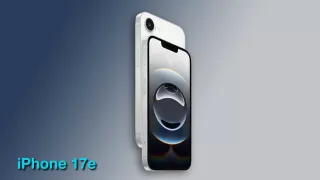In 2017 and 2019, two research teams claimed ‘proof of principle’ for artificial womb technology (AWT). AWT has long been a subject of speculation in bioethical literature, with broad consensus that it is a welcome development. Despite this, little attention is afforded to more immediate ethical problems in the development of AWT, particularly as an alternative to neonatal intensive care. To start this conversation, I consider whether experimental AWT is innovative treatment or medical research. The research–treatment distinction, pervasive in regulation worldwide, is intended to isolate research activities and subject them to a greater degree of oversight. I argue that there is a tendency in the literature to conceptualize AWT for partial ectogenesis as innovative treatment. However, there are sufficiently serious ethical concerns with experimental AWT that mean that it must not be first used on humans on the basis that it is a ‘beneficial treatment’. First, I outline the prospects for translation of AWT animal studies into treatment for human preterms. Second, I challenge the conceptualizations of experimental AWT as innovative treatment. It must be considered medical research to reflect the investigatory nature of the process and guarantee sufficient protections for subjects. Identifying that AWT is research is crucial in formulating further ethico‐legal questions regarding the experimental use of AWT. Third, I demonstrate that clinical trials will be a necessary part of the clinical translation of AWT because of requirements laid out by regulators. I consider the justification for clinical trials and highlight some of the crucial ethical questions about the conditions under which they should proceed.
Elon Musk, the Tesla CEO and billionaire expressed concern about "population collapse," saying that if there aren't enough people on Earth, there won't be enough on Mars. Many people responded with advice for Musk, including the use of synthetic or artificial wombs that could potentially develop a fetus outside the human body.
The concept of having children outside of the body has long served as an inspiration for books and movies.

Now, research teams from all across the world are looking into the potential of artificial gestation. For instance, one team was successful in raising a lamb for four weeks in a synthetic womb. Artificial shark and lamb gestation have also been tested by Australian researchers.
Technological advancement has allowed for the survival of many infants born at 22 to 23 weeks of gestation. The bulk of them, however, suffer from chronic illnesses like lung disease and cerebral palsy.Thus, researchers developed a system known as the "artificial womb."
What would an artificial womb contain
There would need to be an exterior covering or chamber for an artificial womb. That is where the embryo will be implanted and will be protected while it grows. Until now, uterine tissues taken from an organism and artificially kept alive as well as acrylic tanks and plastic bags have all been employed in animal research.
A synthetic substitute for amniotic fluid, the womb's natural shock absorber, would be necessary for an artificial womb.

Finally, a mechanism for exchanging nutrients and oxygen would be required (so oxygen and nutrients in and carbon dioxide and waste products out). In other words, scientists would need to create a synthetic placenta.
Complex catheter and pump systems have been employed in animal trials. A smaller form of extracorporeal membrane oxygenation, which allows blood to be oxygenated outside the body, is being considered instead.
How artificial wombs can help
Women who are infertile for medical or social reasons may be able to conceive with the help of this emerging reproductive technology. It might also make it possible for women who are transsexual, born without uteruses, or who have lost their uteruses due to cancer, some disease, trauma, or other medical issues to conceive.
Likewise, it might make it possible for homosexual men and single men to become parents without a surrogate.
The main focus of the debate concerning artificial wombs has been on their ability to improve the survival rate of extremely premature infants.
Presently, there is little to no chance of survival for infants born before 22 weeks of gestation. Furthermore, a range of issues is likely to affect infants born at 23 weeks.

It may be possible to increase the survival and quality of life of extremely premature babies by using a sealed "bio bag" that resembles the womb of the mother.
A bio bag offers access to the umbilical cord, oxygen, a form of substitute amniotic fluid, as well as all necessary water and nutrients (and medicine, if required). This might make it possible to continue the gestation outside of the womb until the child has grown enough to be able to live on his or her own and have a good chance of survival.
An artificial womb might also provide the fetus with the ideal conditions for growth, giving it the right proportion of nutrients and hormones. It would also prevent the developing fetus from coming into contact with external risks like infectious diseases.
CLINICAL TRIALS AND AWT
It has been generally assumed that non‐beneficial research on developing human beings with the object of devising AWT could be ethically permissible. Such conclusions, however, should be carefully drawn. In this section, I consider the justification for AWT research and posit that the consequentialist justification usually offered in the literature would be dependent on certain conditions. This investigation examines some of the questions that an IRB or the FDA might consider in deciding whether to approve an AWT clinical trial. The permissibility of these trials, I demonstrate, is embroiled in intricate ethical issues of research design. Before I engage in this discussion, I will briefly address the issue of the status of the subjects in a potential AWT trial.

I have argued elsewhere that the subject of an AW is a unique entity. A ‘gestateling’ in an AW is not a neonate because it is not completely born. It is still undergoing the process of gestation (human creation), and is thus more ontologically similar in behaviour and physicality, in terms of exercising no capacity for independent life and having no interaction with others, to a foetus. It is also distinct from a foetus because it is not dependent on another person, a fact that will alter the way we treat it. There is, therefore, room to question whether a gestateling should be treated more like a foetus or a preterm. In the context of a potentially non‐beneficial research trial there are significant similarities in the way foetuses and preterms are treated, because regulators generally deem it impermissible to expose either to unnecessary risk and require researchers to maximize potential benefits and obtain parental consent. The U.S. Office for Human Research Protections (OHRP) has produced regulations on protecting human subjects in research that provides guidance for IRBs making decisions. Subpart B provides additional protections for foetuses and neonates involved in research. §46.204 details the requirements in relation to foetuses and is explicit that any risk to the foetus must be solely by interventions that have some prospect of direct benefit, or if there is no direct benefit the risk must only be minimal and the purpose of research must be the generation of important biomedical knowledge that cannot be otherwise obtained. The informed consent of both parents must be obtained (so far as they are both available, and the consent of only the pregnant person is required if the research would also be for their benefit). §46.205 details the requirements for research on neonates of uncertain viability (likely to be those identified for any AWT study). This section requires that the research has the prospect of enhancing the probability of survival with the least possible risk and that the purpose of the research is important biomedical knowledge that cannot be obtained by other means with no added risk. The informed consent of either parent must be sought, unless the neonate is thought to be non‐viable in which case the consent of both parents is required (dependent on availability). We can see that there are significant similarities, therefore, in the practicalities of what IRBs will consider irrespective of whether subjects are deemed equivalent in moral status to foetuses or neonates. In this paper I will focus on the practicalities, in determining the permissibility of trials, that IRBs would consider important, for example what risks any subject is exposed to etc. because the approach taken would likely be similar irrespective of the subject’s moral status. The matter of how the moral status of the subject of an AW will determine its treatment in the future should be revisited.
Also Read: What is published in foreign media on Russian failure and Indian Chandrayaan 3 hopes

































